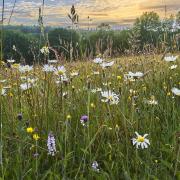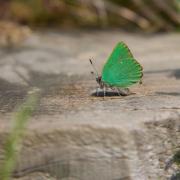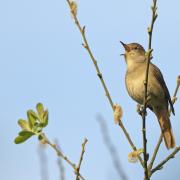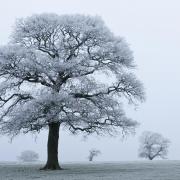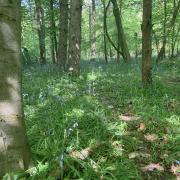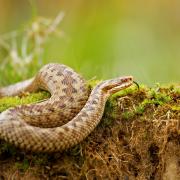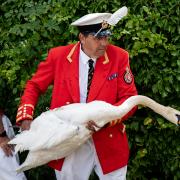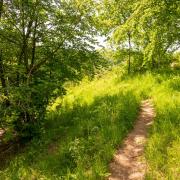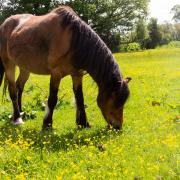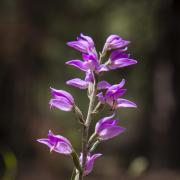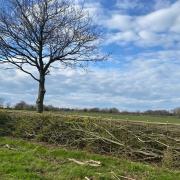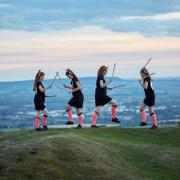December is the month of the shortest day and chilly winter temperatures, but it’s also a great month for wildlife, says Sue Bradley.
With just under eight hours of daylight, every minute counts on the shortest day.
For Gloucestershire Wildlife Trust, the winter solstice is a good time to stop and take stock of the natural world, and the nature reserves they care for provide the perfect spots.
Over at Daneway Banks, the wildflowers and butterflies of summer have gone, with grazing livestock exposing yellow meadow anthills, creating a picture similar to craters on the moon.
‘Seeing them is an out of world experience,’ says Lead Land Manager East, Alan Sumnall. ‘Low sun creates long shadows, and green woodpeckers can be seen or heard feeding from the anthills, making their distinctive ‘yaffle’ call.’

At woodlands like Coopers Hill and Frith Wood, all appears lifeless on December 21, with the tall trees looking bare. Yet taking a moment to stop and listen reveals signs of life, whether it’s birds searching for food or rustling small mammals. All around us most life is sleeping, waiting for longer days and warmth, but not everything has gone into hibernation.

‘Wildlife that’s active at this time of year is much easier to see as there’s more urgency to feed,’ says Alan.
At Greystones Farm, on the edge of Bourton-on-the-Water, the full power of nature can be seen with the rivers in high flow and possibly bursting their banks.
‘It reminds us how we must work with nature, not against it, to survive,’ explains Alan. ‘Wildlife demonstrates that it is adapted for such events, as come summer, this area will be teeming with flowers and insects once again.’

For those standing on Crickley Hill and Barrow Wake, there are fabulous frosty views across to Gloucester and Cheltenham, and it’s not long to wait until the sunset at 4pm, which can often be spectacular.
Over in the Forest of Dean, the trees on Poor’s Allotment are stripped of their foliage and it’s possible to see over to the River Severn.
‘You can see right through,’ says Tom Cover, Land Management Officer. ‘You’ll also be able to spot our grazing Highland cattle, Exmoor ponies and Hebridean sheep.’

Heathland reserves, such as Wigpool, can be quite misty at this time of the year, giving an other-worldly feel.
‘They do trap moisture,’ says Tom. ‘I find the mist quite serene and quiet. For anybody visiting these reserves at this time of year, I would highly recommend wellies; an innocent-looking puddle can come up to your shins, but there’s so much to discover.’

Perhaps the ultimate nature reserve to visit on the shortest day is Lancaut in the heart of the Wye Valley.
‘It’s a fantastic place at any time of the year but in winter it’s possible to look out over the remains of its Medieval church and along the river; there’s nothing like it,’ says Tom.





